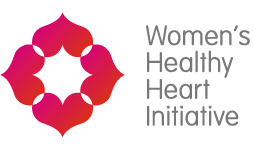LEARN THE TERMS
What Is Heart Disease?
Heart disease occurs when the arteries that supply blood to the heart muscle narrow and harden due to a buildup of plaque on the inner walls. As plaque continues to build, blood flow to the heart is reduced. This can lead to a heart attack.
Heart disease is a lifelong condition; while procedures can help blood flow more easily to the heart, the arteries remain damaged. This increases your risk of having a heart attack and can restrict quality of life.
Heart disease is a largely preventable disease. By making changes in your daily habits and understanding your risk factors, you can make a difference to your future health.
What is a Heart Attack?
A heart attack (also called a myocardial infarction) happens when an artery becomes blocked with plaque, preventing oxygen- and nutrient-rich blood from getting to the heart. If the artery is not opened quickly, the blocked section of the heart muscle begins to die, leading to permanent damage. The longer a person goes without intervention, the greater the damage.
What is Cardiac Arrest?
Cardiac arrest occurs when the heart stops beating. This means that no blood is being pumped throughout the body, and that immediate treatment is needed to prevent death.
WARNING SIGNS OF A HEART ATTACK
While some heart attacks are sudden and intense, many begin slowly, with mild pain or discomfort. Misdiagnosing or ignoring symptoms is not unusual, and patients often wait too long before getting help. This is why it is so important to recognize the signs.
- Chest discomfort: a feeling of pressure, squeezing, fullness, pain, burning or heaviness
- Discomfort or pain in other areas of the body: neck, jaw, shoulder, arms, back or stomach
- Shortness of breath
- Sweating
- Nausea or gastrointestinal issues
- Lightheadedness
- Unusual fatigue
Not all of these signs may occur, or they may go away and return. Even if you are unsure it is a heart attack, do not delay. The sooner treatment is administered, the better your chance of survival. Early intervention also means that more heart muscle can be saved, reducing disability and improving qualityof life.
If someone has a collapsed, lost responsiveness and is not breathing, this person has gone into cardiac arrest. It is imperative to call 911.
A woman’s heart is different
Heart disease may present differently in women differently because biologically, a woman’s heart is different than a man’s. The classic image of a heart attack—a sudden clutching of the chest and collapse—may not be how women experience a heart attack. Women are more likely than men to experience atypical symptoms, particularly unusual fatigue, anxiety, shortness of breath, indigestion, nausea/vomiting, and back or jaw pain. Since these symptoms can mirror everyday maladies and are often subtler, they can be easier to misdiagnose.
WHAT TO DO
A heart attack is a life-and-death emergency and every moment counts. If you are experiencing these signs, or witness someone experiencing these signs, you should immediately call 9-1-1.
Emergency medical services (EMS) can begin treatment as soon as they arrive.
If you are experiencing symptoms, it is important to stop all activity and sit or lie down in a comfortable position. If you have been prescribed nitroglycerin by a doctor, take it as directed. Chew and swallow an Aspirin® (ASA) unless you are allergic. If you are in your home, ensure the door is unlocked so that the EMS can swiftly reach you. If you are on medications it is also wise to keep a list in your wallet or an easily accessible place for the EMS to consult.
If you are with someone who goes into cardiac arrest, stay on the phone with the 9-1-1 operator.
The operator can help guide you through CPR. While you are performing CPR, call out for someone to retrieve an Automated External Defibrillator (AED). Attach the device and follow the instructions it provides.
Get Moving!
Physical in-activity doubles womens risk of developing and dying from heart disease and stroke. Only 30 minutes a day, 5 times per week and remember Life’s Simple 7!
